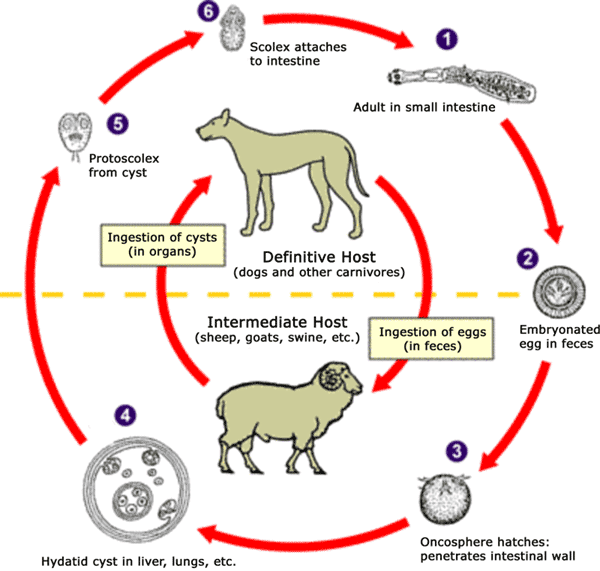Cystic Echinococcosis

Hydatidosis or cyst hydatic disease is a cosmopolitan larval cestodosis caused principally by the Echinococcus granulosus tapeworm, the adult form of which parasitises the intestine of dogs. Hydatidosis generally affects large domestic herbivores; humans are dead-end hosts, infected through contact with herding dogs or through ingestion of food contaminated with canine excrement.
Epidemiology
The annual incidence of human infection in Europe is around 1/100 000 but the disease is more common other countries such as Uganda, Sudan and Ethiopia where the prevalence is estimated at between 1 and 3.2% of the general population.
Clinical description
After ingestion, the larvae develop very slowly, forming cysts that are not diagnosed until 10 to 20 years after contamination. The liver (60% of cases), lungs (30% of cases) and other organs (kidneys, spleen, brain etc) are the principle sites of cyst formation.
Management and treatment
The primary treatment is surgery, if possible accompanied by drug treatment with albendazole. However, treatment of the osseous sub-form, in which there are no well-limited cysts, is much more complex.